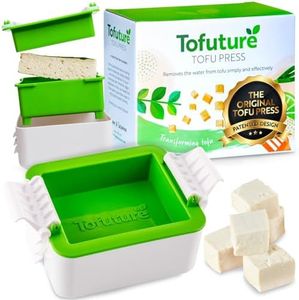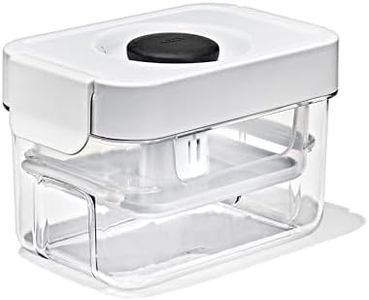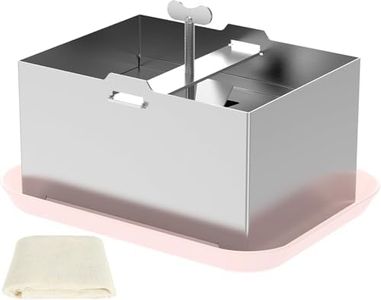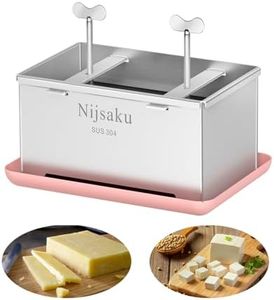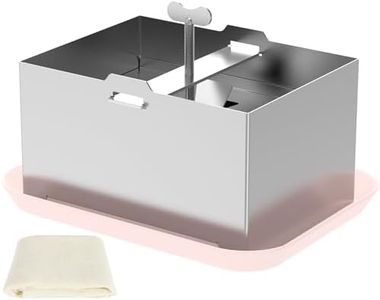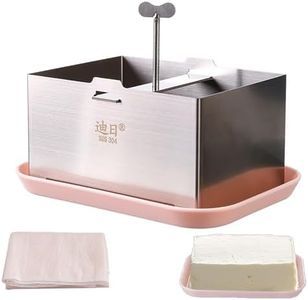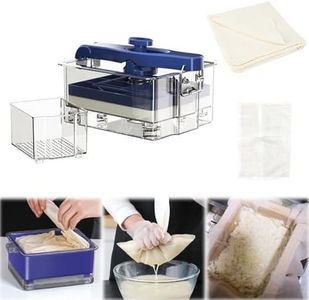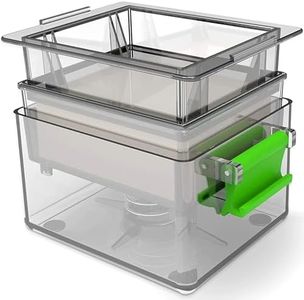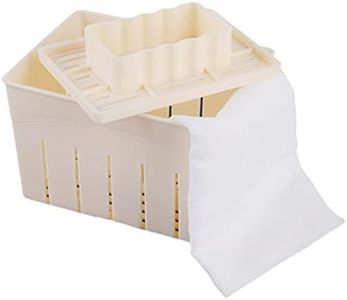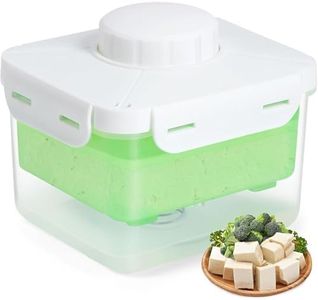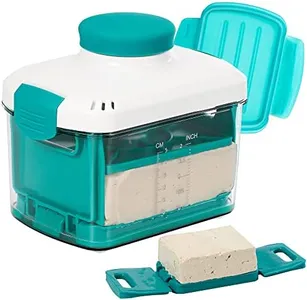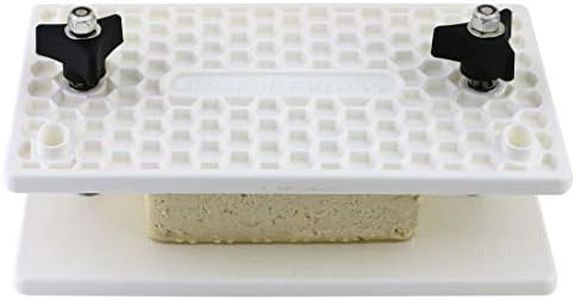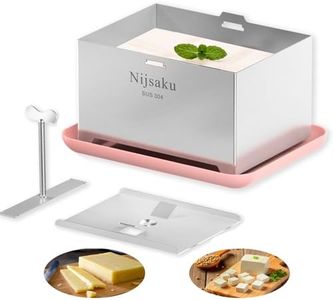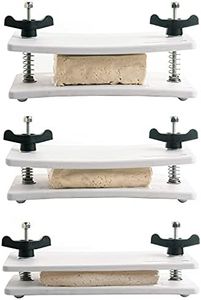We Use CookiesWe use cookies to enhance the security, performance,
functionality and for analytical and promotional activities. By continuing to browse this site you
are agreeing to our privacy policy
10 Best Tofu Presses
From leading brands and best sellers available on the web.By clicking on a link to a third party's website, log data is shared with that third party.
Buying Guide for the Best Tofu Presses
Choosing the right tofu press can make a big difference in your cooking, especially if you enjoy making tofu-based dishes frequently. Pressing tofu removes excess water, allowing it to absorb marinades better and achieve a firmer, meatier texture. When selecting a tofu press, it's important to look at a few key specifications to ensure the press will suit your kitchen habits and tofu preferences. By understanding what each feature does and how it matches your cooking style, you can pick a press that makes your tofu preparation easier and more effective.Pressing MechanismThe pressing mechanism refers to the way the tofu is pressed inside the device. Most tofu presses use either a screw-based system, elastic bands, or a spring-loaded plate. Screw-based systems allow you to control the pressure manually by tightening or loosening the screws, which is great if you want to adjust for different tofu textures. Elastic band and spring-loaded models are simpler to use and usually apply even pressure on their own, but offer less customization. If you like having control or plan to use different kinds of tofu (firm, extra firm, or silken), a screw-based mechanism might suit you. However, for everyday, hassle-free pressing, spring or band types can be a great fit.
Capacity/SizeCapacity refers to how much tofu you can press at once. This usually matches a standard tofu block, but some presses are larger or smaller. If you cook for a big family or prepare multiple blocks at a time, a larger press can make things easier. For individuals or small households, a compact press saves space and still gets the job done. Always check whether the press fits the typical block size of your local grocery store to avoid mismatch.
MaterialTofu presses are made from plastic, stainless steel, bamboo, or a combination. Plastic models are lightweight, affordable, and easy to clean, but some may absorb odors over time. Stainless steel is durable and non-reactive, making it long-lasting and easy to sanitize, but can be heavier. Bamboo offers natural antibacterial properties and looks attractive but may require more maintenance to prevent mold. If you value longevity and hygiene, stainless steel or high-quality food-grade plastic is recommended. If aesthetics matter to you or you're avoiding plastics, bamboo might suit your needs.
Ease of CleaningCleaning convenience depends on whether the press has many small parts and if it can be safely washed in a dishwasher. Simple designs with smooth surfaces are easier to keep clean, which helps avoid lingering odors and stains. Dishwasher-safe models can save time, but hand-wash only options might last longer if washed gently. If you use your tofu press regularly, picking one that's quick and easy to clean will make the process more enjoyable and encourage frequent use.
Drainage SystemA good drainage system channels excess water away from the tofu and into a tray or container. This helps prevent a watery mess in your kitchen. Some presses have built-in trays to collect the liquid, while others require placing the press in a dish. For the most convenience, look for a design with an integrated drainage tray, especially if you like tidy countertops or multi-task while pressing. If you don’t mind cleaning up or usually work over the sink, this may be less important.
